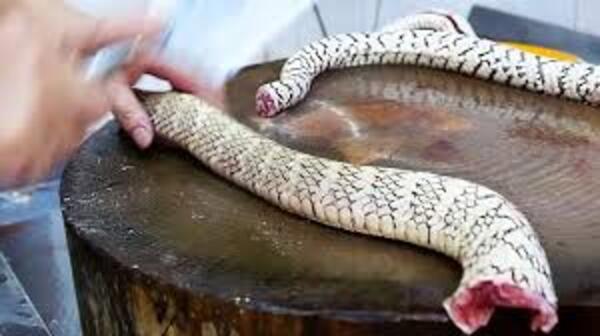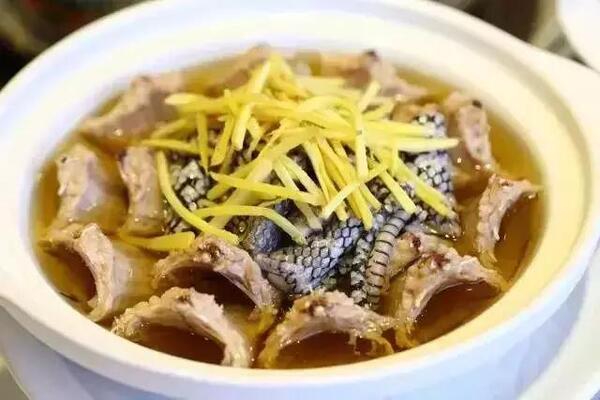Eating snakes has intrigued and captivated people across different regions of the world for centuries. This practice is deeply rooted in cultural traditions, culinary exploration, and even nutritional benefits. In this article, we explore the various aspects of snake consumption, from cultural significance to recipes and ethical considerations.

The consumption of snake meat dates back centuries, particularly in regions where survival relied on utilizing local wildlife. Ancient records from China, Southeast Asia, and Africa document snakes being used in traditional dishes and medicines. Indigenous tribes and rural communities often regarded snakes as a viable food source during periods of scarcity.
Asia: In countries like China and Vietnam, snake meat is considered a delicacy. Traditional Chinese medicine attributes health-enhancing properties to certain snake species, such as improving blood circulation and enhancing vitality.
Africa: Some African tribes incorporate snakes into their diets as part of sustainable hunting practices.
North America: In Southern states like Texas and Louisiana, rattlesnake meat is often fried or used in stews.
These cultural variations highlight how snake consumption is both a practical and symbolic act in many societies.

While not all snakes are safe to eat, certain species are widely recognized as edible and favored for their taste and texture:
Python: Known for its tender, lean meat, often used in soups or stews.
Rattlesnake: A popular choice in North America, typically fried or grilled.
Cobra: Consumed in parts of Southeast Asia, often prepared in soups or broths.
Water Snake: Commonly eaten in Asian countries, known for its mild flavor.
It is important to note that snake species consumed vary based on regional availability and cultural preferences.
The annual consumption of snakes and the quantities for each species vary widely depending on the region, cultural practices, and market demand. Below is a detailed exploration of commonly consumed snake species and their approximate consumption patterns worldwide:
Pythons (Pythonidae)
Regions Consumed: Southeast Asia (Vietnam, Thailand, Indonesia), Africa, and parts of South America.
Uses: Python meat is popular in soups, stews, and stir-fries. In some regions, python leather also contributes to its hunting and farming.
Annual Consumption Estimate: Tens of thousands, particularly in countries like Vietnam where python farming is prominent.
Rattlesnakes (Crotalus)
Regions Consumed: United States (especially Texas, Oklahoma, and New Mexico).
Uses: Often fried or grilled, rattlesnake meat is a traditional delicacy in Southwestern American cuisine.
Annual Consumption Estimate: Approximately 20,000–25,000 during rattlesnake roundups and culinary festivals.
Cobras (Naja)
Regions Consumed: China, Vietnam, India, and other parts of Southeast Asia.
Uses: Cobra meat is considered a delicacy and often cooked in soups or medicinal dishes. Cobra gallbladders and blood are also consumed for purported health benefits.
Annual Consumption Estimate: Several thousand, primarily from wild catches and regulated farming operations.
Water Snakes (Homalopsidae)
Regions Consumed: Southeast Asia, particularly in China and Cambodia.
Uses: Often sold in wet markets, water snakes are used in soups and curries.
Annual Consumption Estimate: Tens of thousands, often sourced locally from rivers and lakes.
Sea Snakes (Hydrophiinae)
Regions Consumed: Coastal areas in Southeast Asia and the Pacific Islands.
Uses: Sea snakes are less commonly consumed but are considered a delicacy in some fishing communities.
Annual Consumption Estimate: Limited to a few thousand due to legal and environmental restrictions.
Boas (Boidae)
Regions Consumed: South America, particularly in Amazonian communities.
Uses: Boa meat is often consumed by indigenous groups and rural communities as a protein source.
Annual Consumption Estimate: Difficult to quantify but likely in the hundreds or low thousands.
Common Rat Snakes (Ptyas mucosa)
Regions Consumed: India, Southeast Asia.
Uses: Rat snakes are commonly consumed in rural areas and often sold in local markets.
Annual Consumption Estimate: Tens of thousands, mainly from wild populations.
Lack of Comprehensive Data: Much of the consumption occurs in rural or undocumented areas, making exact figures hard to obtain.
Legal and Illegal Trade: While farming contributes significantly to the supply, illegal hunting and unregulated trade inflate consumption numbers.
Cultural Sensitivity: In some regions, snake consumption is tied to traditional beliefs, which makes accurate reporting sensitive.
Farming and Commercialization: Countries like Vietnam and China lead in snake farming, particularly for pythons and cobras, ensuring a steady supply for both meat and other products.
Culinary Festivals: Events like rattlesnake roundups in the U.S. significantly boost annual snake consumption for entertainment and culinary purposes.
Environmental Concerns: Conservation efforts have led to restrictions on hunting certain species, impacting consumption trends in specific regions.
In summary, the annual consumption of snakes varies significantly based on species, geography, and cultural factors. Python, cobra, and rattlesnake species are among the most consumed, with tens of thousands consumed globally each year, either through farming or wild capture.
Snake meat is a rich source of protein and contains essential nutrients. Here's a breakdown:
High Protein Content: With over 20 grams of protein per 100 grams, snake meat rivals chicken and fish as a lean protein source.
Low Fat: It contains minimal fat, making it a healthier alternative to red meats.
Micronutrients: Snake meat is rich in vitamins and minerals such as calcium, iron, and zinc.
Some studies suggest that consuming snake meat may offer immune-boosting properties, but more research is needed to validate these claims.
Snake Soup (China): A slow-cooked broth made with snake meat, herbs, and spices, believed to be a warming dish in colder months.
Fried Rattlesnake (USA): Battered and deep-fried snake meat, often compared to chicken in flavor.
Snake Curry (India): A spicy dish featuring snake meat cooked with traditional Indian spices.

Chefs worldwide are experimenting with snake meat in fusion cuisine, blending it with global flavors to create innovative dishes like snake tacos or grilled snake skewers.
The practice of hunting snakes for consumption raises ethical concerns, particularly with endangered species. Some regions have introduced snake farming to meet culinary demand while reducing pressure on wild populations.
In many countries, consuming snake meat is legal, but certain species are protected under wildlife conservation laws. Travelers should be cautious about consuming snake meat in regions with strict wildlife regulations.
Parasites and Toxins: Improper preparation can lead to the consumption of parasites or residual venom.
Allergic Reactions: Some individuals may experience allergies to snake proteins.
To minimize risks:
Cook snake meat thoroughly to eliminate parasites.
Source meat from reputable vendors to ensure safe handling.
Snake farming has emerged as a sustainable alternative to wild hunting. Farms provide a controlled environment for breeding snakes, ensuring a steady supply for culinary use without depleting natural populations. Additionally, farmed snakes are less likely to carry diseases compared to their wild counterparts.
The practice of eating snakes sparks debates about ethics, environmental impact, and cultural respect. While some view it as a sustainable practice, others raise concerns about animal welfare and conservation. Ultimately, the choice to consume snake meat is deeply personal and influenced by cultural norms.
Snake meat offers a unique culinary adventure that blends cultural heritage, nutrition, and exotic flavors. Whether you’re sampling traditional snake soup in Asia or trying fried rattlesnake in the U.S., eating snake meat is a testament to humanity’s resourcefulness and gastronomic curiosity. However, it’s crucial to approach this practice with respect for wildlife conservation and ethical considerations.
For adventurous eaters, snake meat may be an opportunity to explore new flavors and traditions, but always ensure safety and sustainability when indulging in this exotic delicacy.
Here’s a table highlighting snakes that are considered unsafe or unsuitable for consumption, along with reasons why:
| Snake Species | Reason Not Edible | Additional Notes |
|---|---|---|
| Venomous Snakes (e.g., King Cobra, Inland Taipan) | Risk of venom contamination during improper preparation or handling. | While venom is neutralized when cooked, improper handling can lead to accidental envenomation. |
| Sea Snakes (e.g., Banded Sea Krait) | High risk of toxicity from concentrated venom or consumption of their venomous prey. | Some species are consumed in coastal areas, but safety depends heavily on local expertise. |
| Endangered Species (e.g., Indian Rock Python) | Legally protected and consumption is prohibited to conserve populations. | Eating these species can lead to legal penalties and harm biodiversity. |
| Large Constrictors (e.g., Anacondas) | Risk of parasitic infections and difficulty in proper preparation due to their large size. | Meat may also contain high levels of heavy metals from their environment. |
| Snakes Found in Polluted Areas | Likely to accumulate heavy metals, pesticides, or other toxins in their bodies. | This includes urban-dwelling snakes or those from contaminated wetlands. |
| Certain Arboreal Snakes (e.g., Green Tree Python) | Rarely consumed due to low meat yield and risk of parasites. | Also often kept as exotic pets rather than being used as food. |
| Exotic or Non-native Species (e.g., Boa Constrictor in Non-native Regions) | Often unknown if they are safe for human consumption or protected by local laws. | Consumption might introduce zoonotic diseases. |
Parasites and Toxins: Many snakes carry parasites or accumulate toxins based on their diet and environment.
Legal Restrictions: Certain species are protected by wildlife conservation laws.
Ethical Concerns: In many cultures, consuming snakes is controversial or taboo.
Note: Always consult local regulations and experts before consuming any type of snake to ensure safety and legality.
animal tags: Snake
We created this article in conjunction with AI technology, then made sure it was fact-checked and edited by a Animals Top editor.